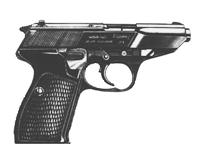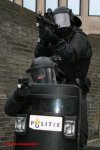
April 1994, the Dutch police, formerly comprising 148 individual municipal (Gemeentepolitie)forces and one national force (Rijkspolitie), have been reorganised.
The new organisation (June 2003: 52390 men and women-civilians included)is divided into 25 regional forces and one national force,which provide certain support services. The size of a regional force depends on factors such as population size, crime levels and building density. Each regional force breaks down into a number of districts or divisions, each headed by a district commander with a staff.
Branches
The precise structure of the organisation is determined by the regional forces. In theory, each force has a number of specialised branches in addition to the basic units, which operate at local level and have a general mandate.
The most important branches (regional level) and tasks (local level) are:
Basic unit:
Specialisation is not found at the lowest level of the organisation, the basic unit. A basic unit has a general mandate; its officers must be all-rounders, since their daily work can varygreatly. Their main duties are:
- Routine surveillance by car, motorcycle or bicycle, on foot or on horseback. This may also involve work with police dogs.
- Simple investigate work, which does not require specialised knowledge and is not usually very time-consuming.
- Crime prevention, for instance in the form of advice on how to deter burglars.
- Dealing with traffic problems. This includes checks on roads accidents, but also includes advising municipal councils on traffic management.
- Ensuring compliance with environmental legislation.
- Monitoring the implementation of special legislation, such as the Licensing and Catering Act, the Firearms Act, the Gaming Act, and the Fisheries Act.
Every police officer can moreover theoretically be deployed in a Mobile Unit, and nearly all officers follow a basic course to equip them for such duties.
Cars:
Police cars of the regional forces are standard marked with a set pattern of reflecting stripes. This not only helps the public to recognise these vehicles, but is also a safety measure. In use are for instance Mercedes,Volkswagen and Volvo.
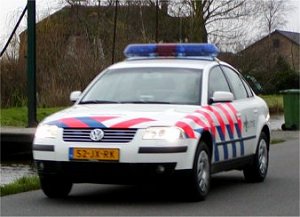 |
Regional Force Haaglanden-Westland |
 |
Regional Force
Haaglanden Mobile Unit. |
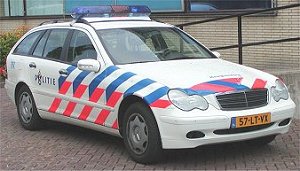 |
Regional Force Haaglanden-Westland Mercedes 200. |
The National police service or KLPD. This force is a responsible for areas which benefit from a centralised approach, and for a certain special duties. The KLPD comprises five divisions:
- Mobility (for instance Traffic, Water Police and the Aviation Investigation Unit)
- Royal and Diplomatic Security
- Logistics (for instance clothing, arms, and ammunition)
- Support
- National Criminal Intelligence Service
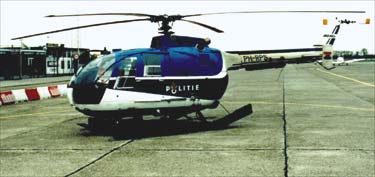
The uniform of a Dutch policeman consists of a navy-blue tunic and blue-ish grey trousers. Policewoman tend to dress like their male colleagues, though some opt for a skirt or culottes, with a hat replacing the cap.
 |
 |
| adspirant | surveillant | agent | hoofdagent | brigadier |
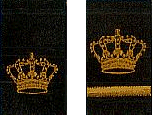
|
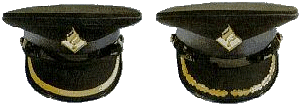 |
| inspecteur | hoofdinspecteur |
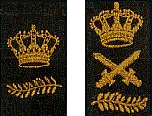
|
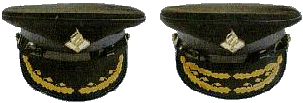 |
| commissaris | hoofdcommissaris |
The standard-issue weapon of the Dutch police is a Walther P5, a semi-automatic pistol. A few special units carry semi-automatic machine guns (Heckler & Koch MP5).
|
|
|
